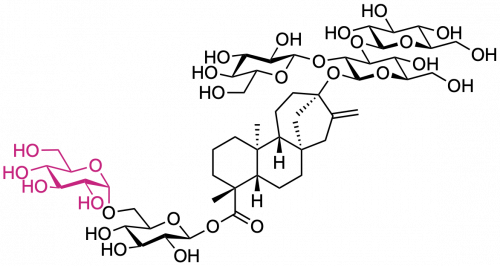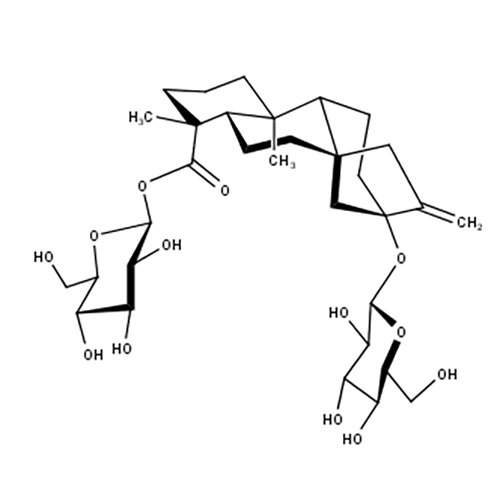The steviol glycoside Stevioside is efficiently α-glycosylated by the generally recognized as safe (GRAS) bacterium Lactobacillus reuteri 180 enzyme mutant Gtf180-ΔN-Q1140E using sucrose as a donor substrate. During the conversion mostly (> 50%) the Glc(β1→C-19 residue of the stevioside is glucosylated, forming an α(1→6) linkage, after which the synthesized Stev-G1 was glucosylated through an α(1→4) linkage, yielding stev-G2. The enzyme formed a mixture of multi-α-glucosylated products whereby the Stev-G2+ is not specifically glucosylated at the C-19, but also at the C13-site.
This product is sold for research use only.


